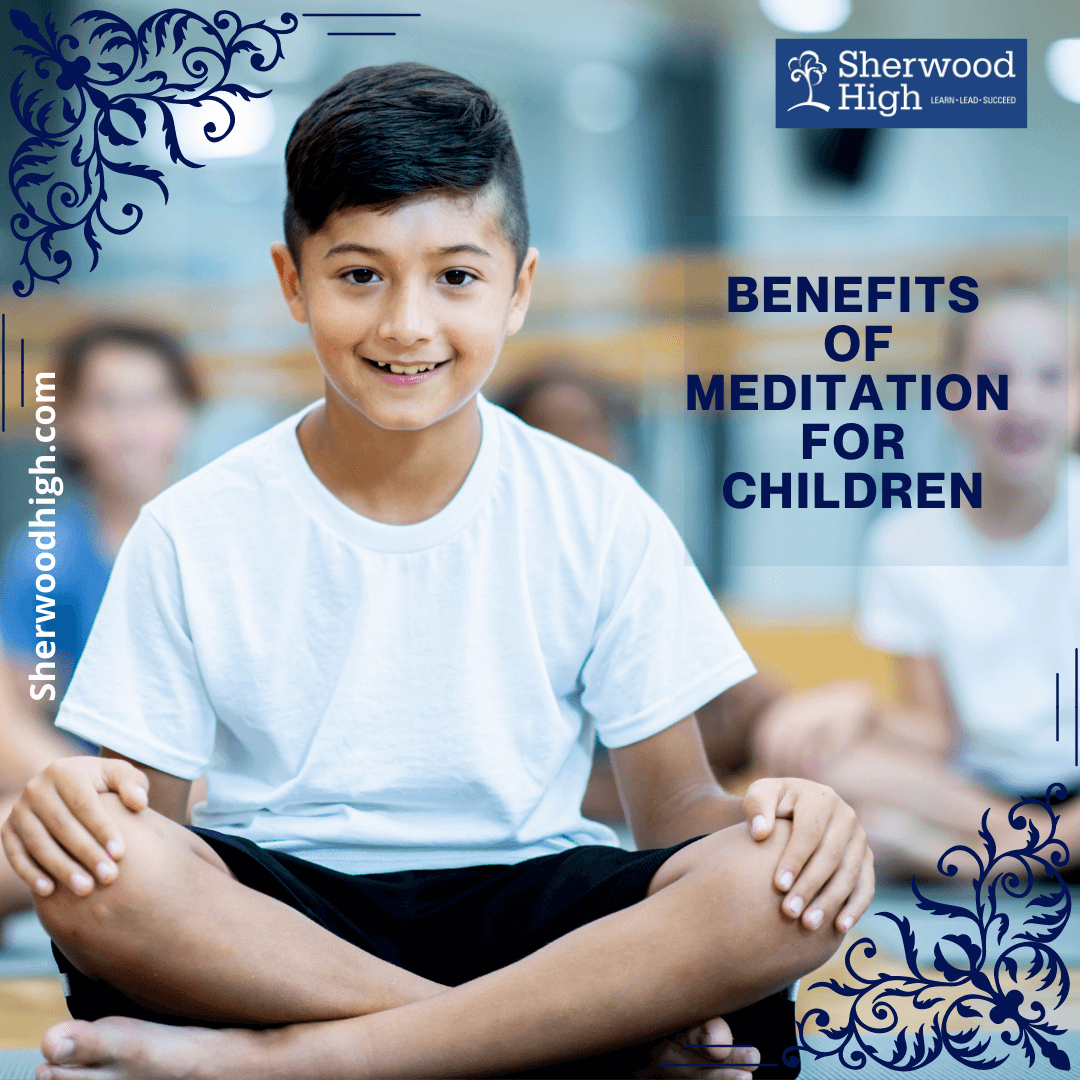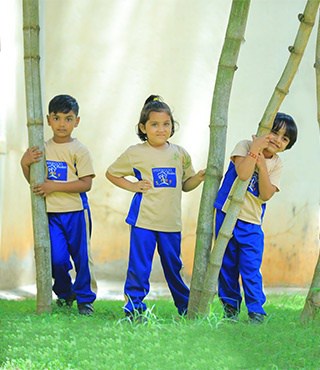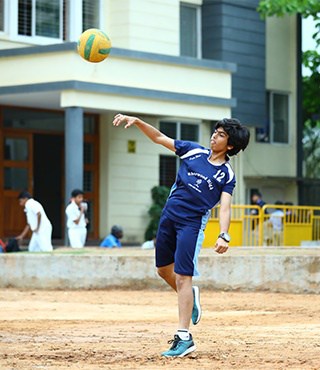

Meditation for Children: Types and benefits.
Meditation for Children: Types and benefits.
Meditation is one of the highest forms of relaxation, isn’t it? Don’t we feel good and elated when we stop overthinking and relax our body and mind in one simple sitting posture? While grown-ups and older children know the importance and benefits of meditation, our little champs are far too young to understand these nuances.
At Sherwood High, we give a lot of importance to activities such as meditation, which helps children in many aspects of their education and life, such as better focus, mindfulness, better awareness, and attention, helps in reducing stress, and many other such positive attributes. So, we will be looking at the many benefits of meditation in this blog.
The pandemic has affected our children more adversely than the adults as they are vulnerable and more susceptible to infections they are confined indoors more than anybody else. The physical limitations of exploration and engagements with friends are greatly affected because many children do not have the kind of immunity it takes to sustain such a situation. This is bound to give children the feeling of disappointment, anxiousness, make them upset and even devastated at some point, and rightly so, because they are at their prime age of exploring the world around them. Meditation is a welcome relief in such situations, which will help the children keep themselves calm and teach them content, focus, a better understanding about the importance of remaining indoors as well as teach them relaxation techniques to cope with such an unusual and difficult situation.
Meditation doesn’t mean just sitting in a place and closing our eyes. It is far more intense than we can understand from an amateur’s viewpoint. Meditation requires the practice of focused concentration. Simply defined, “It is a set of techniques that are intended to encourage a heightened state of awareness and focused attention”. It is also a consciousness-changing technique with a wide variety of benefits on psychological and physical well-being.


There are many types of meditation, such as focused attention meditation or vipassana, Zen meditation, transcendental meditation, kundalini yoga, breath awareness meditation, progressive relaxation meditation, mindfulness meditation, Tai chi, etc.
While many older children can learn or gather knowledge about these types of meditation and practice them in their day-to-day life, these types of meditation may seem very complicated and might feel like a laborious task to accomplish for a little child. Never fear, we have a unique approach on how to help parents with little children, as there are also many other effective techniques you can help children practice instead of these types of meditation.
Meditation does not necessarily have to be complex, we can also meditate through other rather simple ways, like painting simple pictures, practicing yoga, while swimming, and chanting a repeated slogan. These activities keep us more focused and creative.
Art as Meditation:


Painting an artwork or observing or enjoying any art is a form of meditation. While painting artwork, or while playing a piece of music, we are focused and our concentration is sharper, and we become better aware of what we are working on.
This eliminates the superfluous thoughts and makes us focused on what we want. Children of all ages love to paint, colors fascinate children’s minds and bring a lot of positivity, it is the same for any other art as well. They tend to make children involved and help them stay happy and calm. Especially during these testing times like the pandemic, children will be able to cope better with the situation by creating or learning any art form.
Yoga as Meditation:
Many of us are aware of yoga and its multifaceted benefits. We can practice yoga every day, as it does not require much of anything else other than a small place. Yoga makes our bodies flexible and minds stress-free, helping us have a sound body and sound mind. It helps us to think and perform well in all situations.
We may question, is yoga meditation? Yes, meditation is a form of yoga and a part of yoga. In yoga, we concentrate on bodily movements and breathing patterns, and meditation is primarily observing the breathing techniques. So practicing yoga every day will help our children have a better quality of life.
Swimming as Meditation:


A good deal of you may wonder about the connection between meditation and swimming.
How is there a connection between these two things?
The answer to this lies in the hands of the swimmer. Each swimmer has to let go of the distraction to win the race or even while practicing to reach their own goals of swimming. This puts away anxiousness and negative thoughts and improvises their mental ability and physical capacity. While swimming, children concentrate on their breath and it makes them focus solely on one thing. This not only helps in improved focus but also relaxes both the body and the mind of the child.
Positive affirmations as Meditation:
Any piece of a slogan from any religion, or a positive quote or word, is a great mantra to chant repeatedly.
When you say positive affirmations repeatedly, you feel positive, which can profoundly influence your mindset. The skills of eradicating negative thoughts and instilling positive affirmation in children’s hearts are very important.


For example, the famous phrase “All is well” is a positive affirmation. When we chant this regularly, it transforms children’s fears and insecurities into positive energy and helps them do better in whatever it is that they are doing. It can be quite challenging or even seem unrealistic in the beginning, but as they practice, they become more calm, consistent, peaceful, and positive.
In Conclusion:
We would like to say that by staying focused and eliminating negative thoughts, anxiety and stress can be avoided.
How do we do this? By practicing meditation! Meditation through the activities which we have mentioned above are easier for children to understand and practice.
Parents know their children best, so you know if your child might be content staying indoors or not. Staying indoors might have a positive or negative influence on your child. Your child might or might not be very interested in digital or social media. No matter what their preferences, taking advantage of the situation and making use of the noise-free ambiance can help them a great deal.
Using any of the above-mentioned meditation techniques or even other creative and calming activities, by making them follow breathing exercises or by instilling the value of positive affirmations in them. Apart from these, always make it a point to say things like “you are good, you can do it, you are hardworking, you are capable, you are thoughtful, you are kind, you are loved, you are important and you make us happy” to your children as often as you can. Let’s make meditation part of the regular activities of our children to help them lead a better realized and truly fulfilled life.






